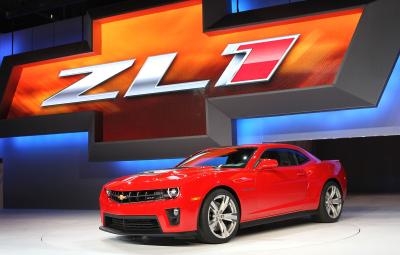
In its greatest possible configuration, the 350 Chevrolet is easily capable of producing as much or more power than any other automotive V8 engine on Earth. However, the small block's strength lies not in its absolute potential, but in its ability to produce stratospheric horsepower figures on the cheap. In terms of bang-for-the-buck performance, you can't do much better than to combine one of the least expensive V8s of all time with the cheapest power-enhancer ever used on an engine.
Begin with a two-bolt main iron block, and drill the mains to accept aftermarket splayed four-bolt main caps. Two-bolt blocks are far easier and cheaper to find, and four-bolt converted blocks are stronger than factory four-bolts anyway. Install a complete rebuild kit with a steel crankshaft, forged rods and forged piston yielding a 9.5-to-1 compression ratio. Installing a main stud girdle will help to stabilize the assembly under stress.
Bolt a set of L98 or Vortec heads to the engine. Vortec heads are better-flowing, more efficient and cooler-running if you use a reverse-flow cooling system, but they'll require a Vortec-specific intake manifold. In this case, head selection isn't critical since the engine is mainly just an anvil designed to withstand massive hits of nitrous. That said, assemble everything using chrome-moly studs to hold the engine together.
Install a medium-performance dual-plane intake manifold. Any manifold designed to operate in the 3,000 to 6,000 rpm range will work, just make sure that you get one with cast-in bungs to hold the nitrous injectors. Install an hydraulic-roller camshaft with about 220 degrees of duration at 0.050-inch tappet lift, 0.480-inch valve lift and about 112 degrees lobe separation. Top the assembly off with 1.5-to-1 roller rockers on the intake and 1.6-to-1 rockers on the exhaust.
Install a direct-port nitrous injection system. Nitrous always gives more power per dollar spent, but this combo comes with a little twist. Instead of connecting the nitrous jets to the fuel lines, enrich your engine using propane. Propane has an octane rating between 100 and 110, and its latent heat of vaporization will help to lower combustion chamber temperatures. Both of these add up to reduced detonation, allowing you to either run more nitrous or keep the same amount of nitrous, but pick up an extra 20 to 40 horsepower.
Top off the assembly with a 650 to 750 cfm carburetor and bolt on a set of stepped headers to keep the combustion chamber clear. Header primaries that step down from 1-7/8 inches to 1-3/4 inches and feed into a 3-1/2-inch collector work best for this application. Install a reverse-flow water pump and the appropriate accessory drive if you're using Vortec heads.